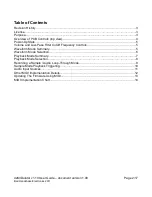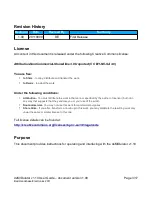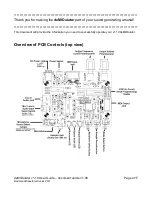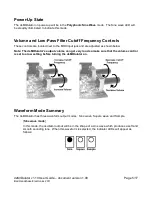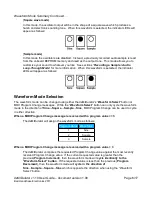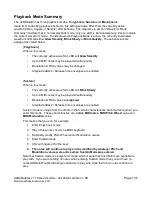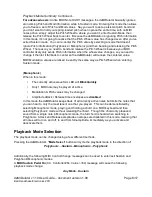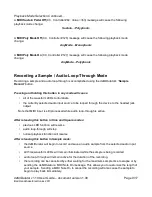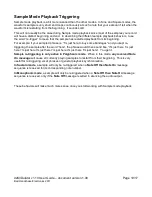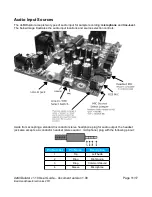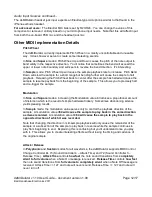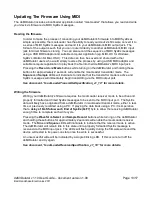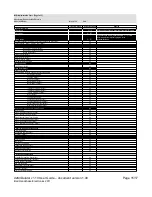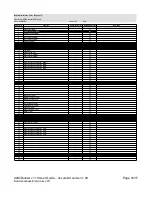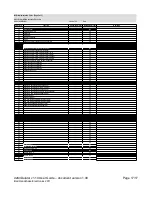
Audio Input Sources continued...
The deMIDulator headset jack input expects an Electret-type microphone similar to that found in the
iPhone earbuds headset.
For advanced users:
The Electret MIC bias is set by R23/R24. You can change the value of this
component or remove it entirely based on your microphone input needs. Note that this will affect input
from both the on-board PCB mic and the headset jack mic.
Other MIDI Implementation Details
Pitch Wheel
The deMIDulator currently implements Pitch Wheel in a mostly uncontrollable and unusable
way. It does however serve to create some interesting sounds.
In
Sine
and
Square
modes: Pitch Wheel Up and Down causes the pitch of the note output to
bend wildly in the respective direction. You'll notice that sometimes the bend will exceed the
upper or lower note boundary and will seem to reverse the bend direction. It's interesting.
In
Sample
mode: Pitch Wheel Up will cause the sample playback rate to increase. Pitch Bend
Down will slow the sample for a short range but bending further will cause the sample to halt
playback. Releasing the Pitch Wheel back to center after the sample has halted will cause the
sample to resume payback from the beginning of the sample. This allows you to precisely halt
and re-trigger the sample.
Modulation
In
Sine
and
Square
modes: increasing the Modulation value introduces a proportional amount
of distortion which is the result of simple hardware trickery. Sometimes abandoning science
yields pleasing results.
In
Sample
mode: the modulation value serves only to control the playback direction of the
sample. A modulation value
<64
will cause the sample to play back in the same direction
as it was recorded
. A modulation value
>=64
will cause the sample to play back in the
opposite direction of which it was recorded
.
Note that changing the direction in mid-sample playback will only cause the remainder of the
sample or a subsection of the sample to play back in reverse while the sample continues to
play from beginning to end. Explaining this is confusing but you'll understand once you play
with it. This allows you to create interesting effects without losing the timing and cadence of
the original sample.
Attack / Release
In
Polyphonic
and
Sustain
modes for all waveforms, the deMIDulator supports MIDI Control
Change Controller #s 73 (Sound Controller 4 – Attack Time) and 72 (Sound Controller 3 –
Release Time).
Attack Time
controls
how fast
the note sound transitions from
completely
silent to full volume
when a Note On message is received.
Release Time
controls
how fast
the note sound transitions from
full volume to completely silent
when a Note Off message is
received. Attack Time == 127 and note will never sound, Release Time == 127 and note will
never turn off.
deMIDulator v1.10 User Guide – document version 1.00
Page 12/17
Bad Handshake Electronics 2011


